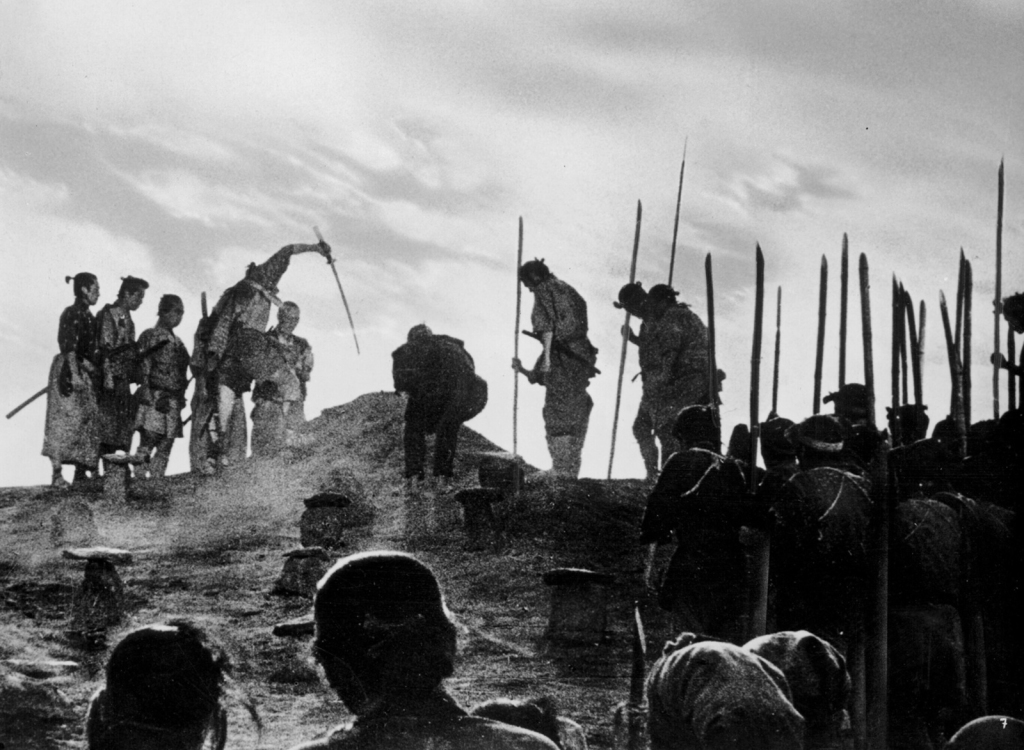 Toho (the studio) had estimated that Seven Samurai was to be completed during the course of eleven weeks. Kurosawa had very different ambitions and extended production to last for a whole year. Of course he then ran out of money several times, and had to require additional funding from the studio. And Toho gave in every time. From then on, Kurosawa became known as Tenno. The Emperor.
Toho (the studio) had estimated that Seven Samurai was to be completed during the course of eleven weeks. Kurosawa had very different ambitions and extended production to last for a whole year. Of course he then ran out of money several times, and had to require additional funding from the studio. And Toho gave in every time. From then on, Kurosawa became known as Tenno. The Emperor.
Minoru Chiaki, who plays Heihachi in the film, has told the following anecdote from the production: 1)
Location: A pond on the Tamagawa River. Kurosawa and Chiaki are fishing. Only half the film is completed, the whole budget spent and production stopped.
Chiaki: «So what’s going to happen?»
Kurosawa: «Well, the company isn’t going to throw away all the money it’s already put into the film. So long as my pictures are hits I can afford to be unreasonable. Of course, if they start losing money then I’ve made some enemies.»Money is provided, shooting starts up, the money is spent once more, production stopped. Kurosawa and Chiaki are fishing again.
Kurosawa: (Dangling his line with some satisfaction.) «Now that they’ve gotten in this deep, they have no choice but to finish it!»
We know that they did. It became as Kurosawa intended it to be.
The film has an impressive drive all the way through, which is unusual for films of this length. Moreover, for the first time Kurosawa used tele lenses, which meant that we are brought much closer into battle sequences than before. Combined with multiple cameras this was nothing less than a redefinition of the action film. Toshiro Mifune is developing his character from Rashomon to perfection in his outsider role. Both he and Takashi Shimura, as the samurai leader, is brilliant. But it’s arguably Seiji Miyaguchi as Kyuzo who steals the show. He plays the ultracool samurai who doesn’t say much. The effort led to cult worship.
What a source of inspiration it has been for other movies as well. The clearest reference must be The Magnificent Seven (1960) with Yul Brynner in the role of Shimura.
1) The Films of Akira Kurosawa: University of California Press 1998


